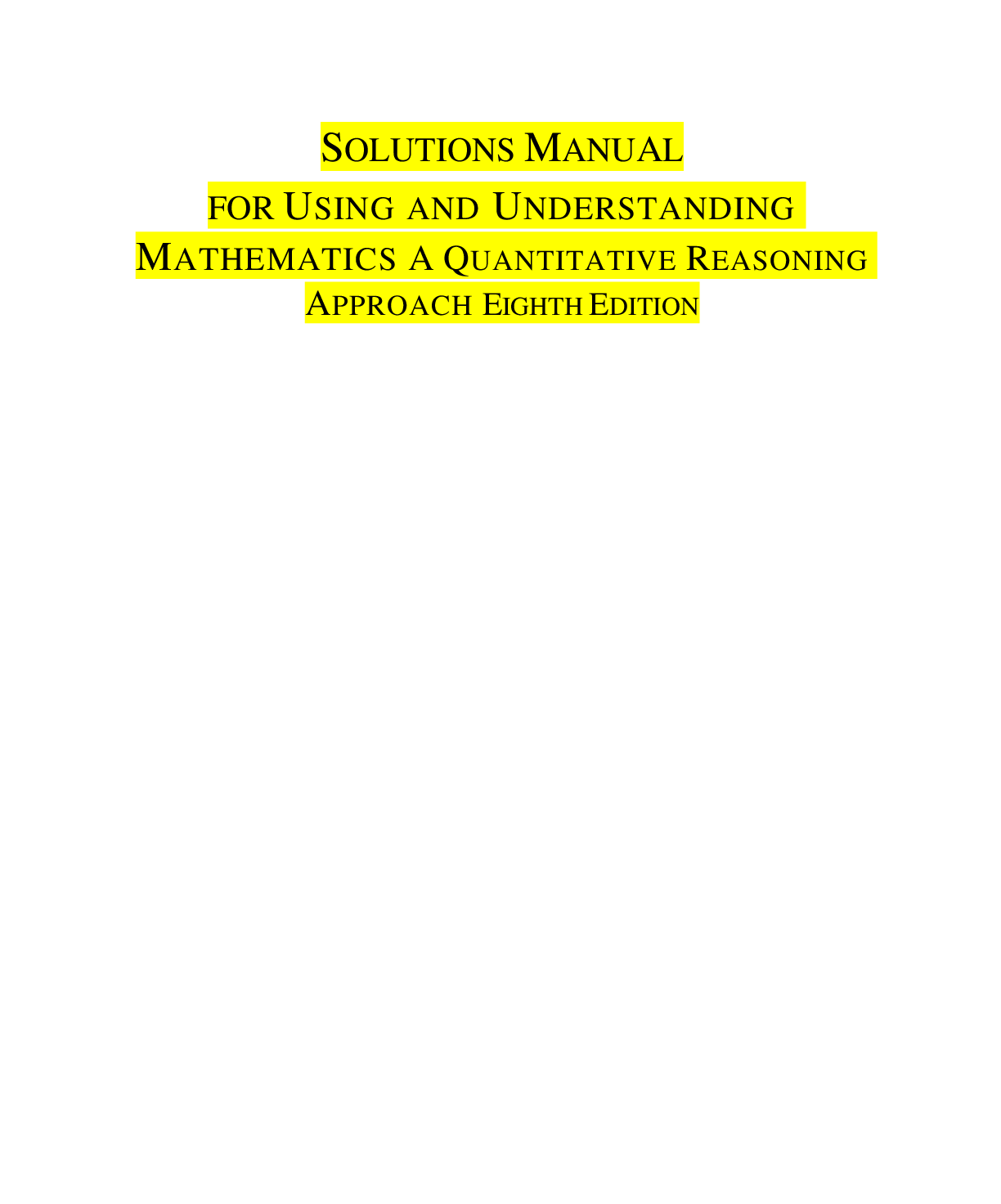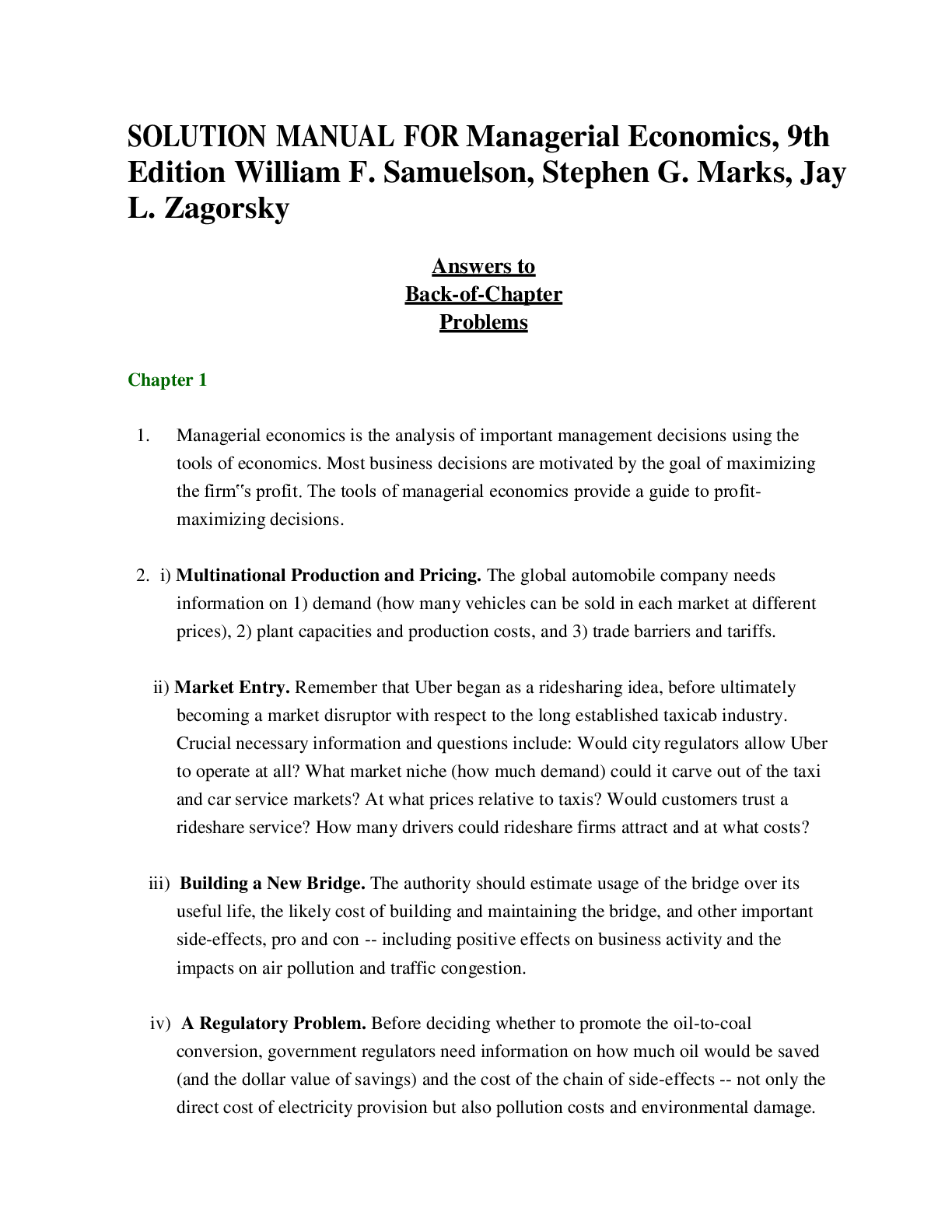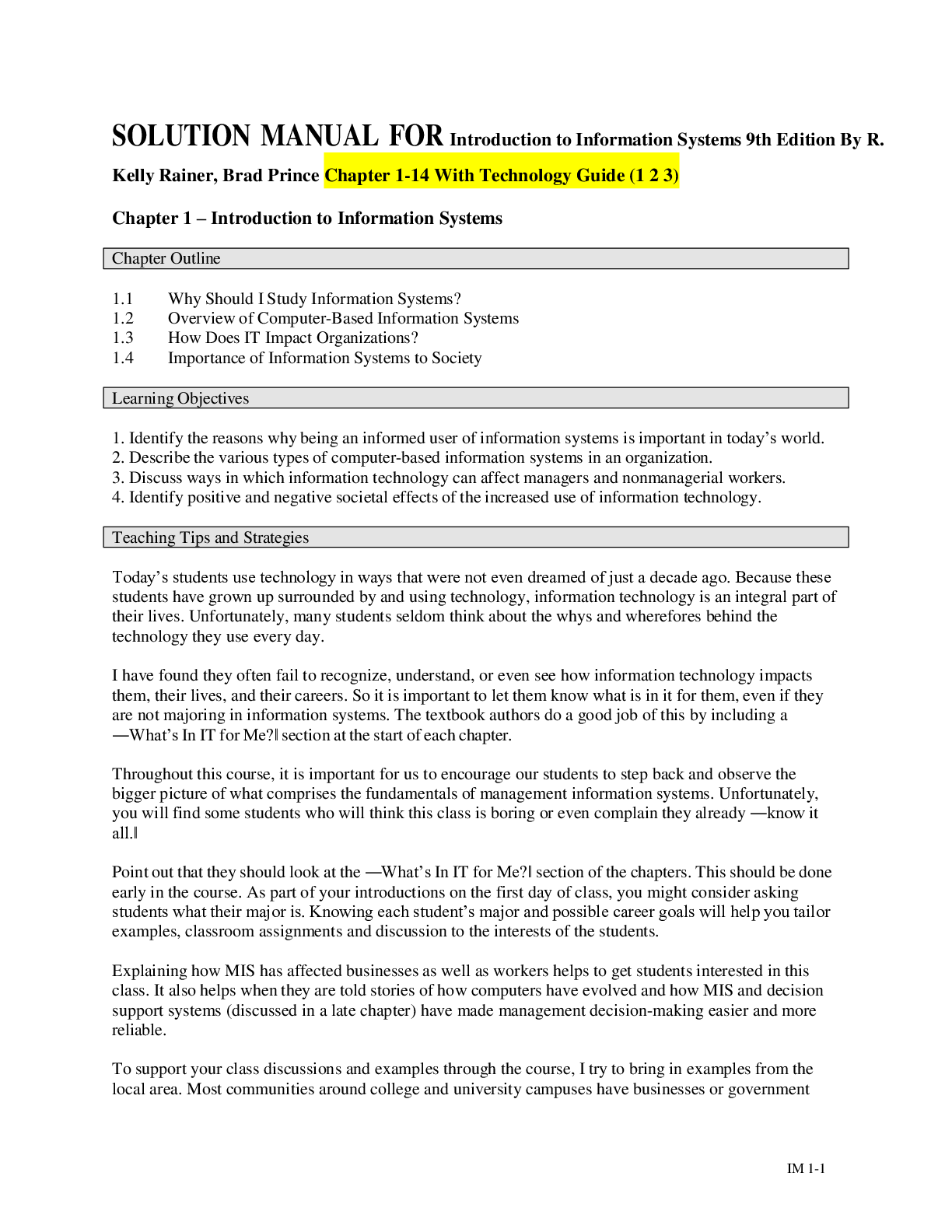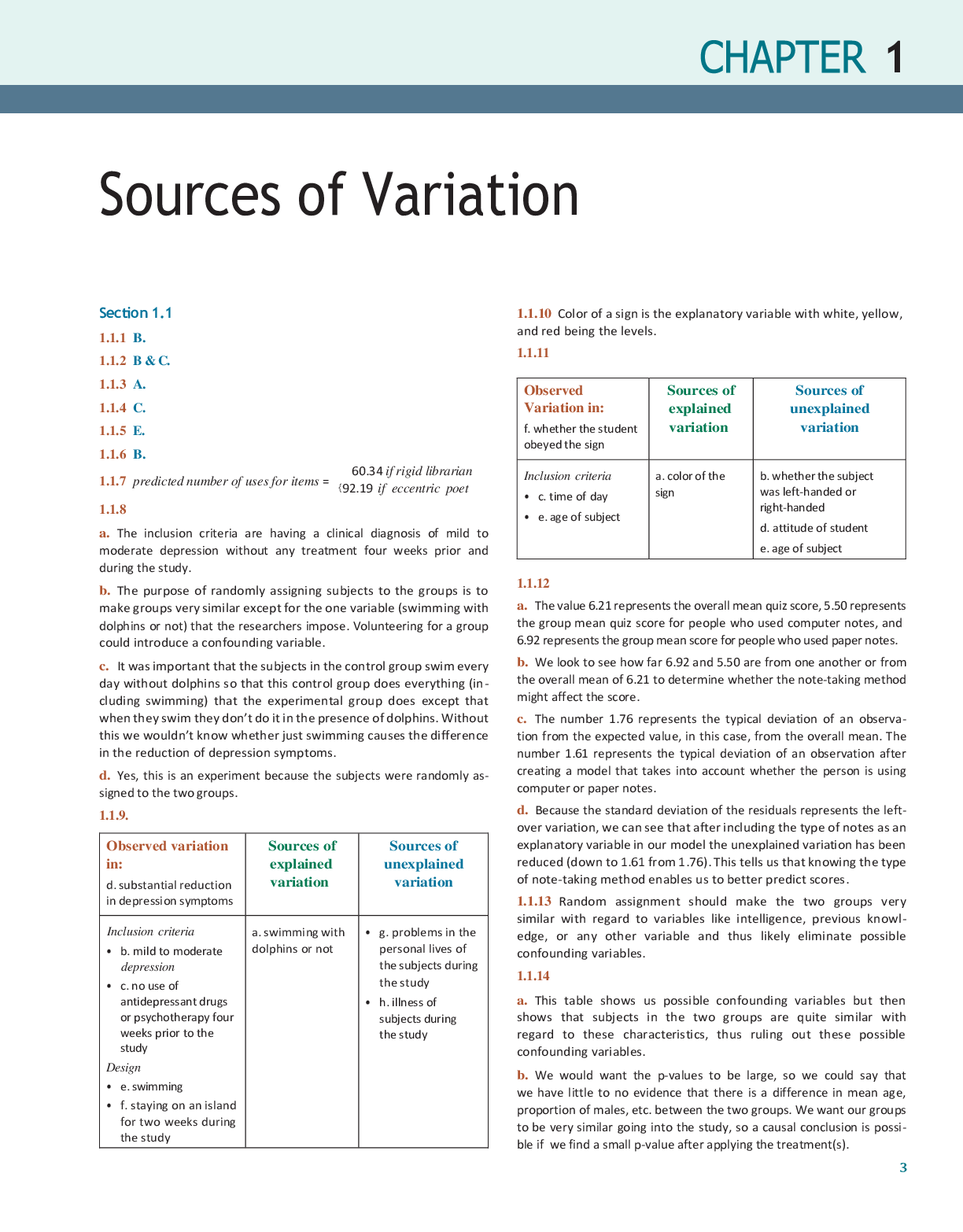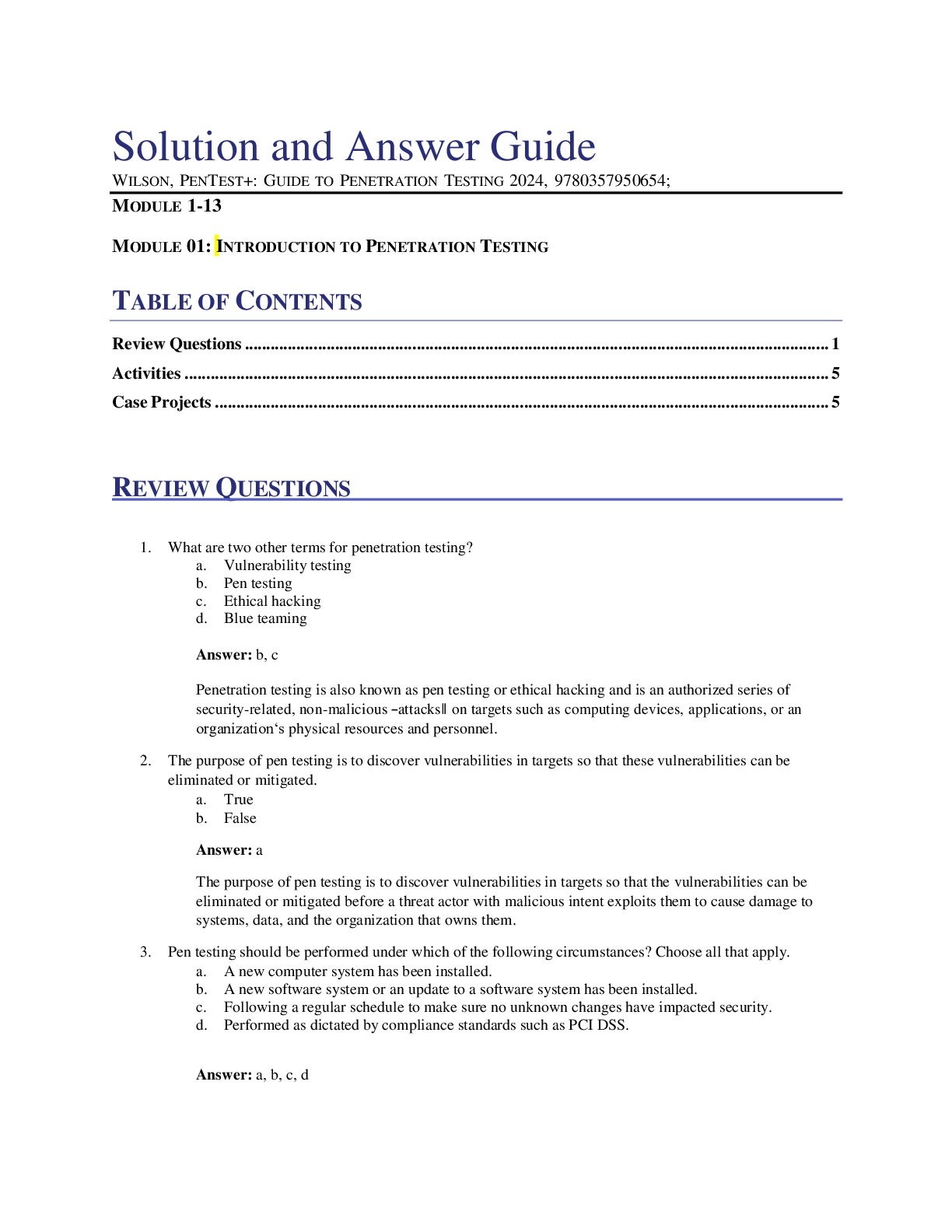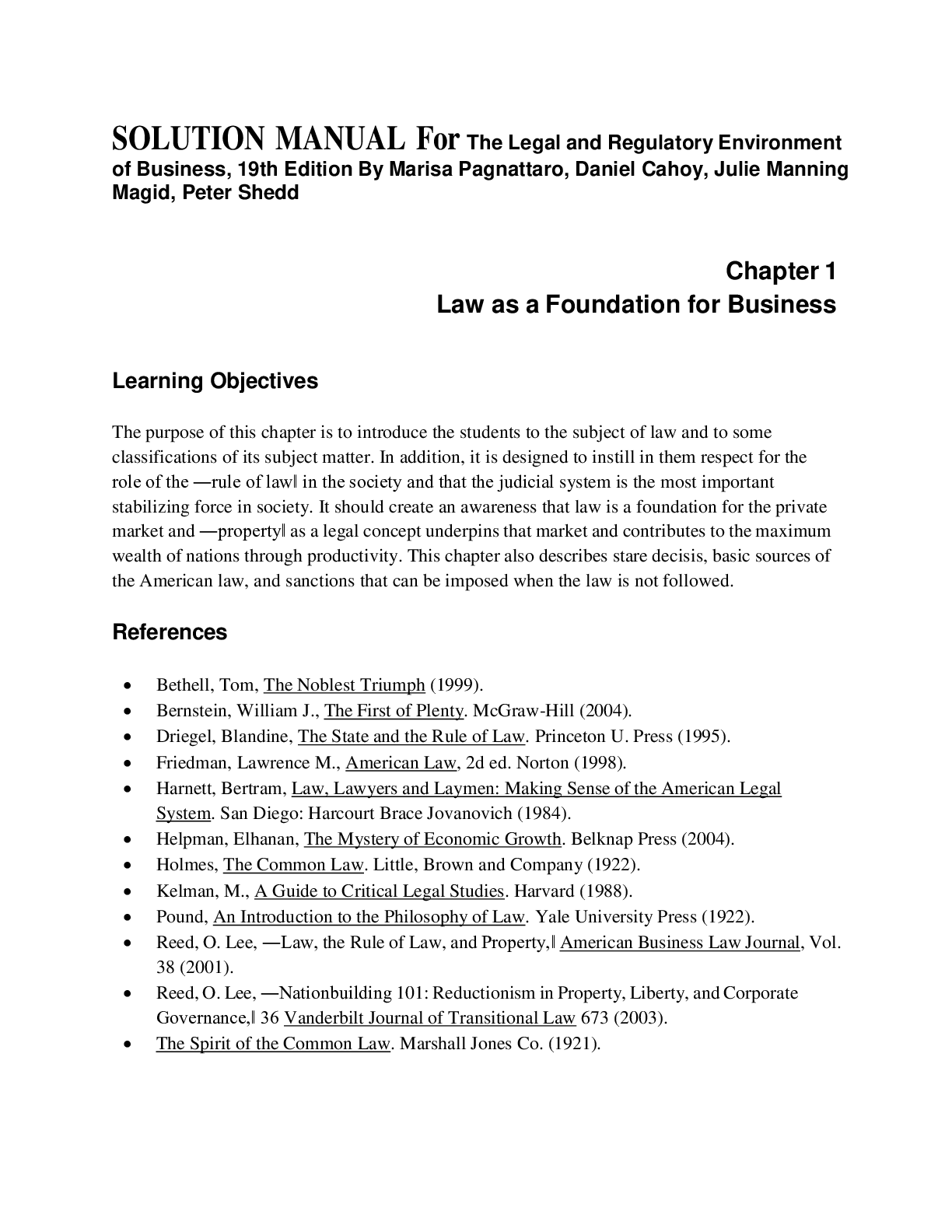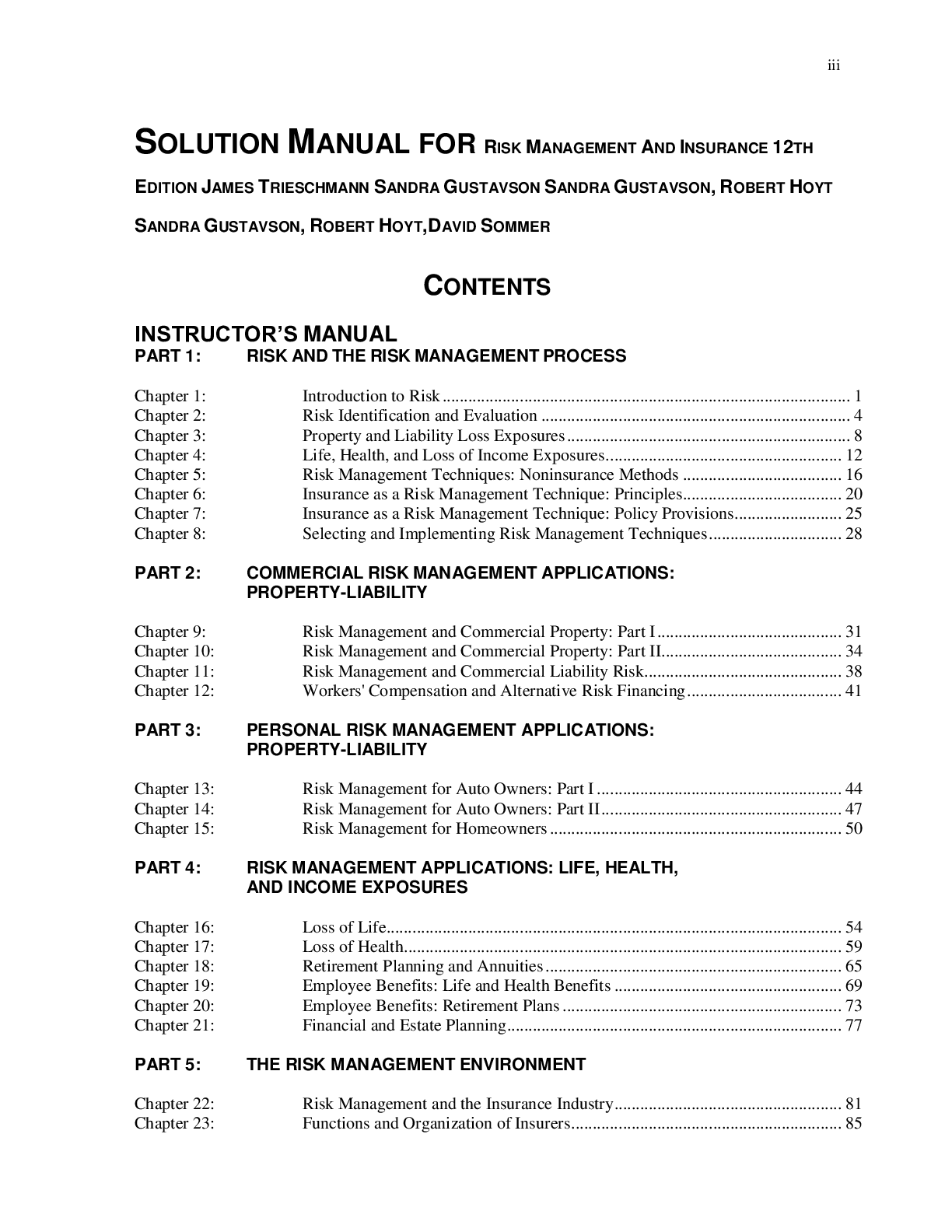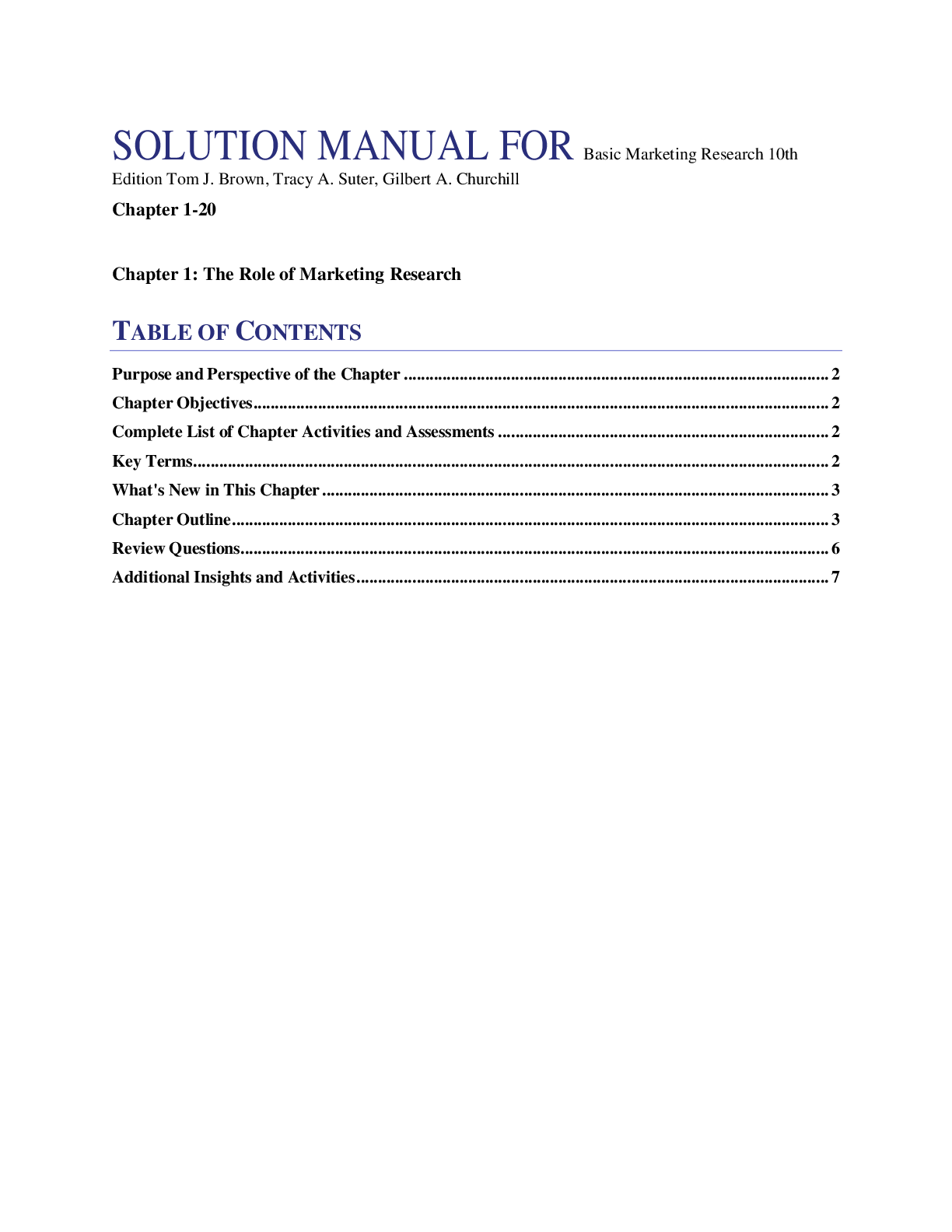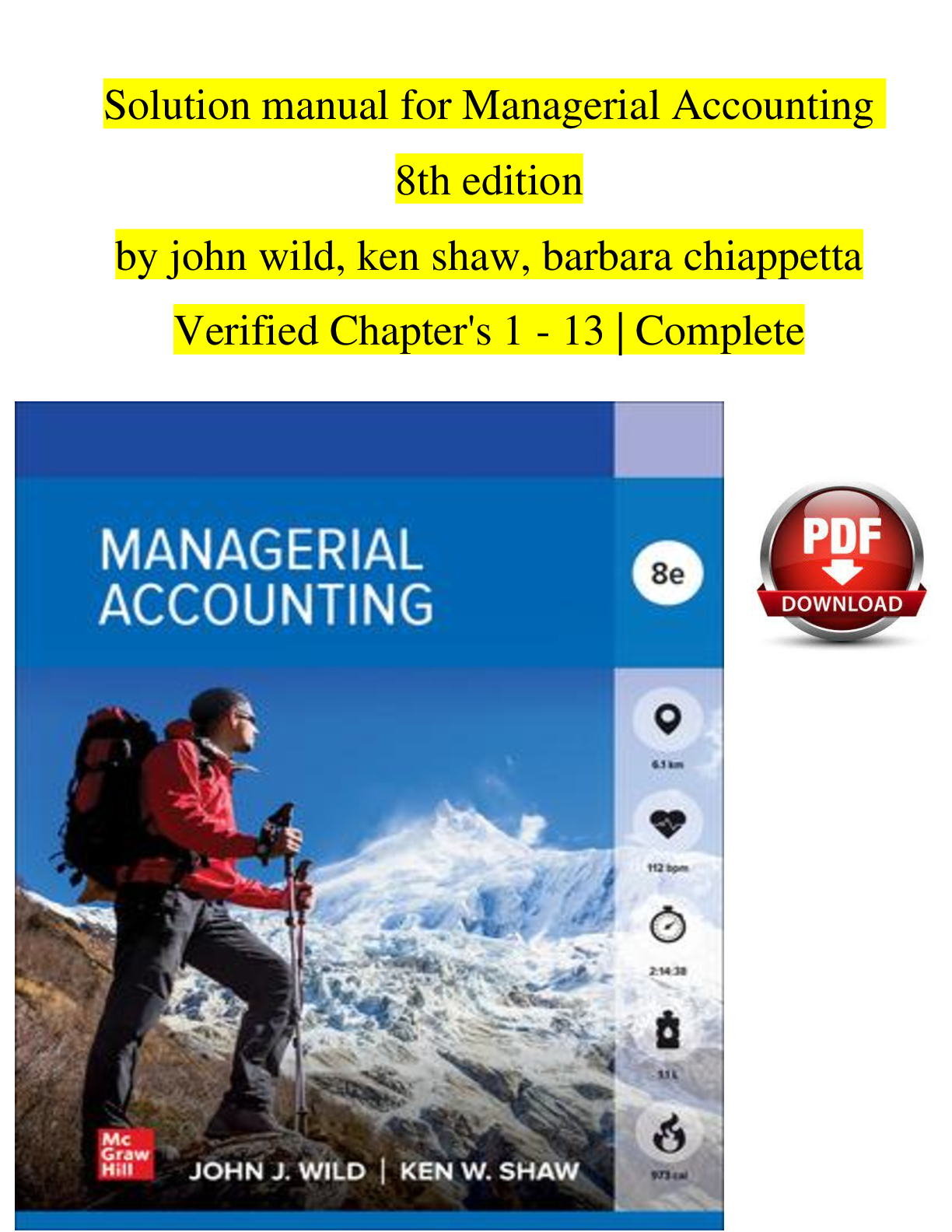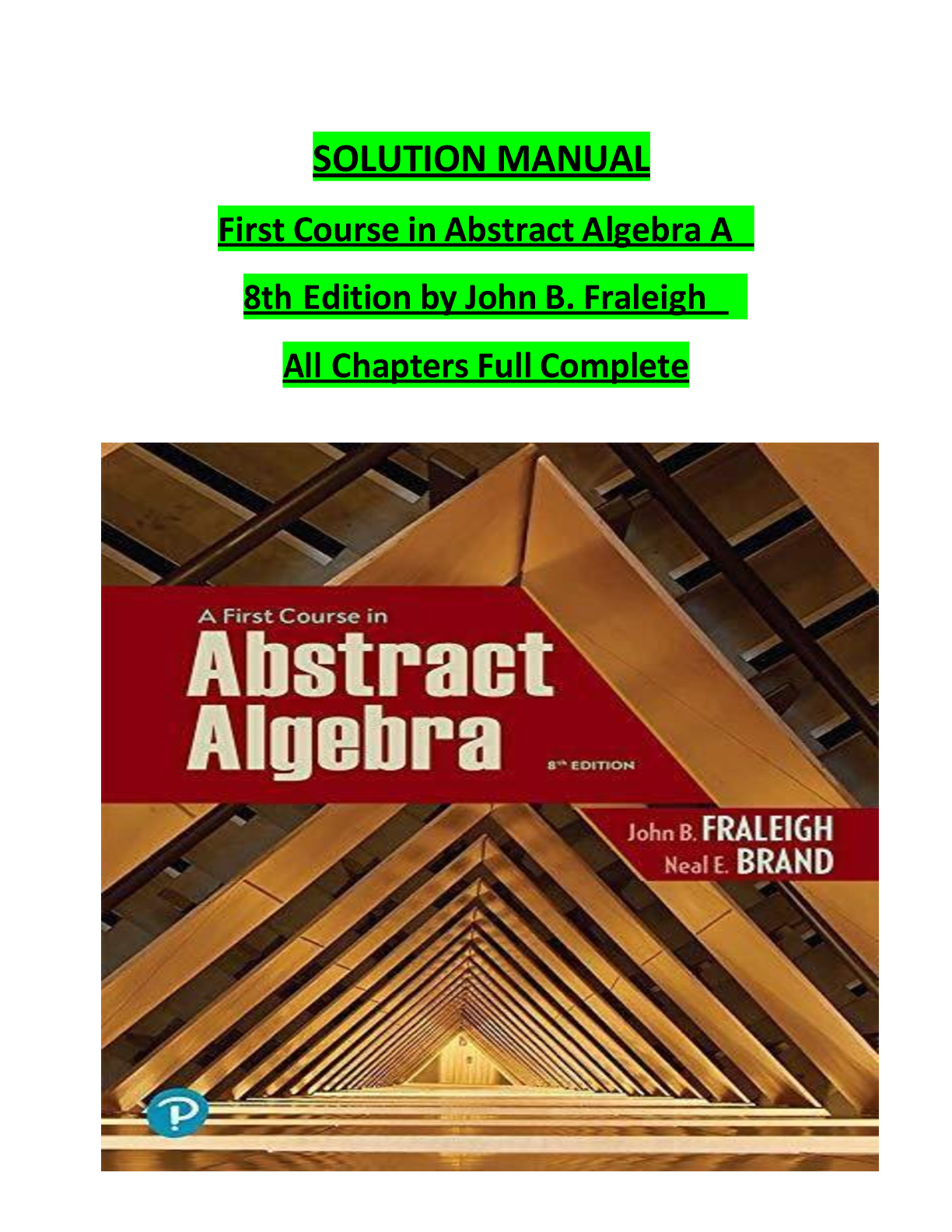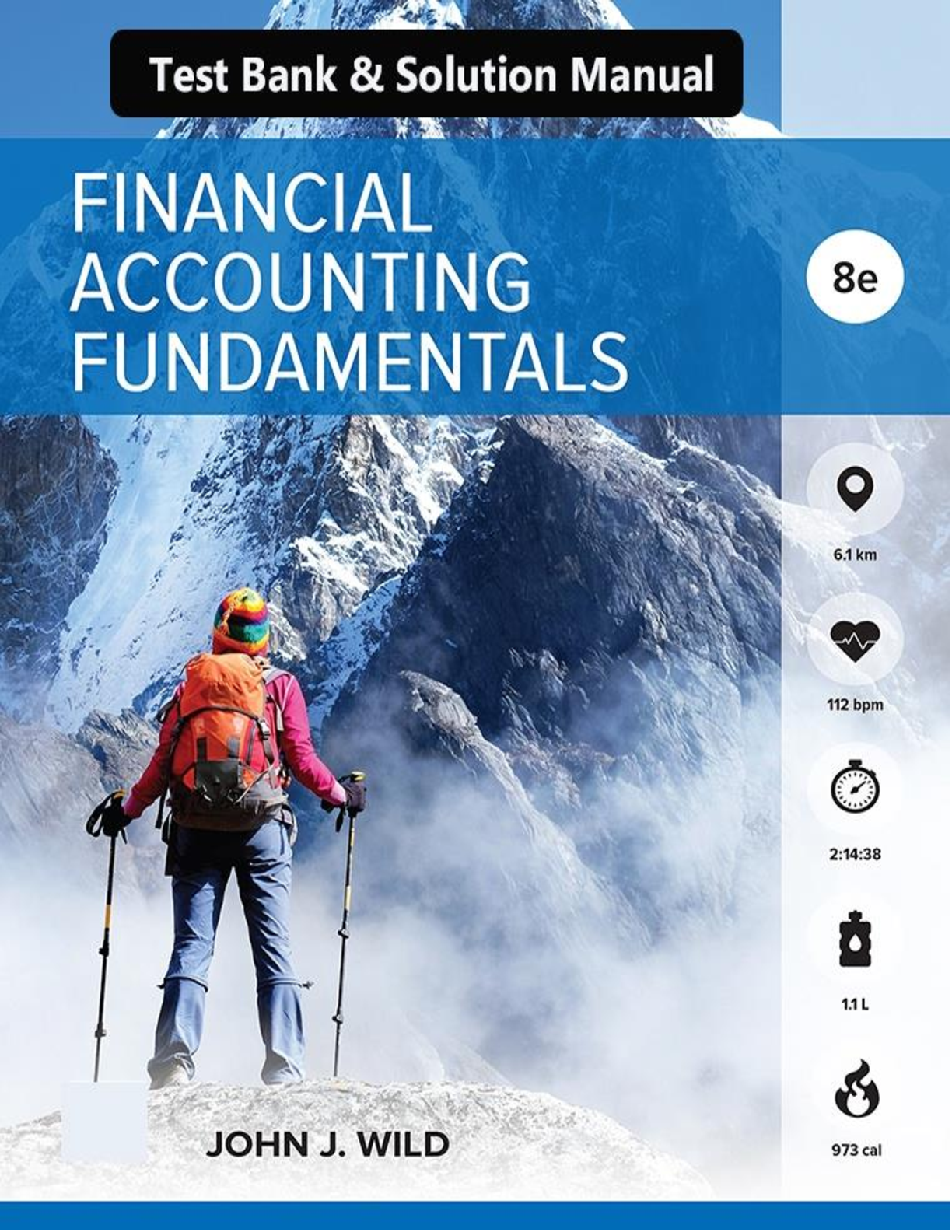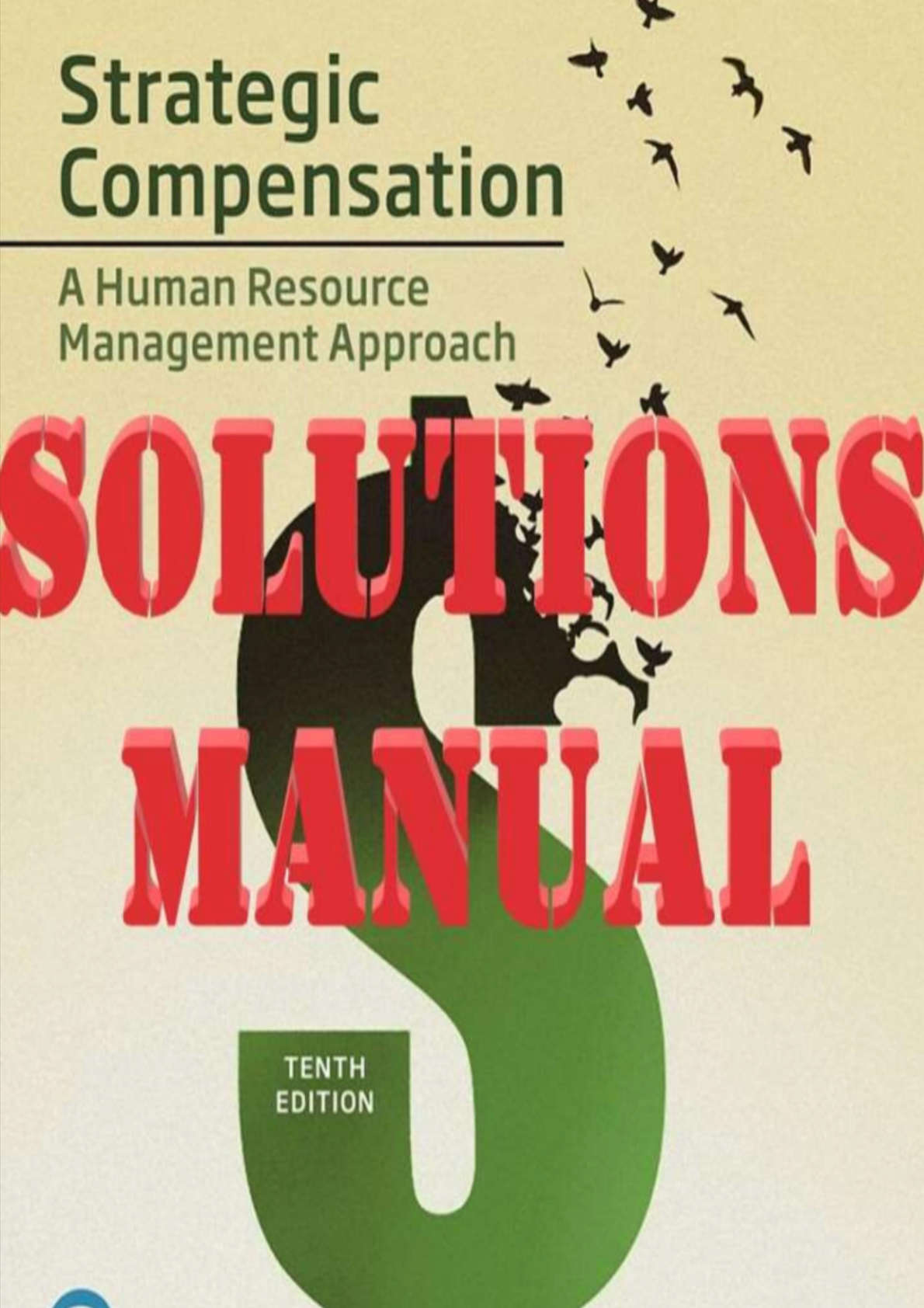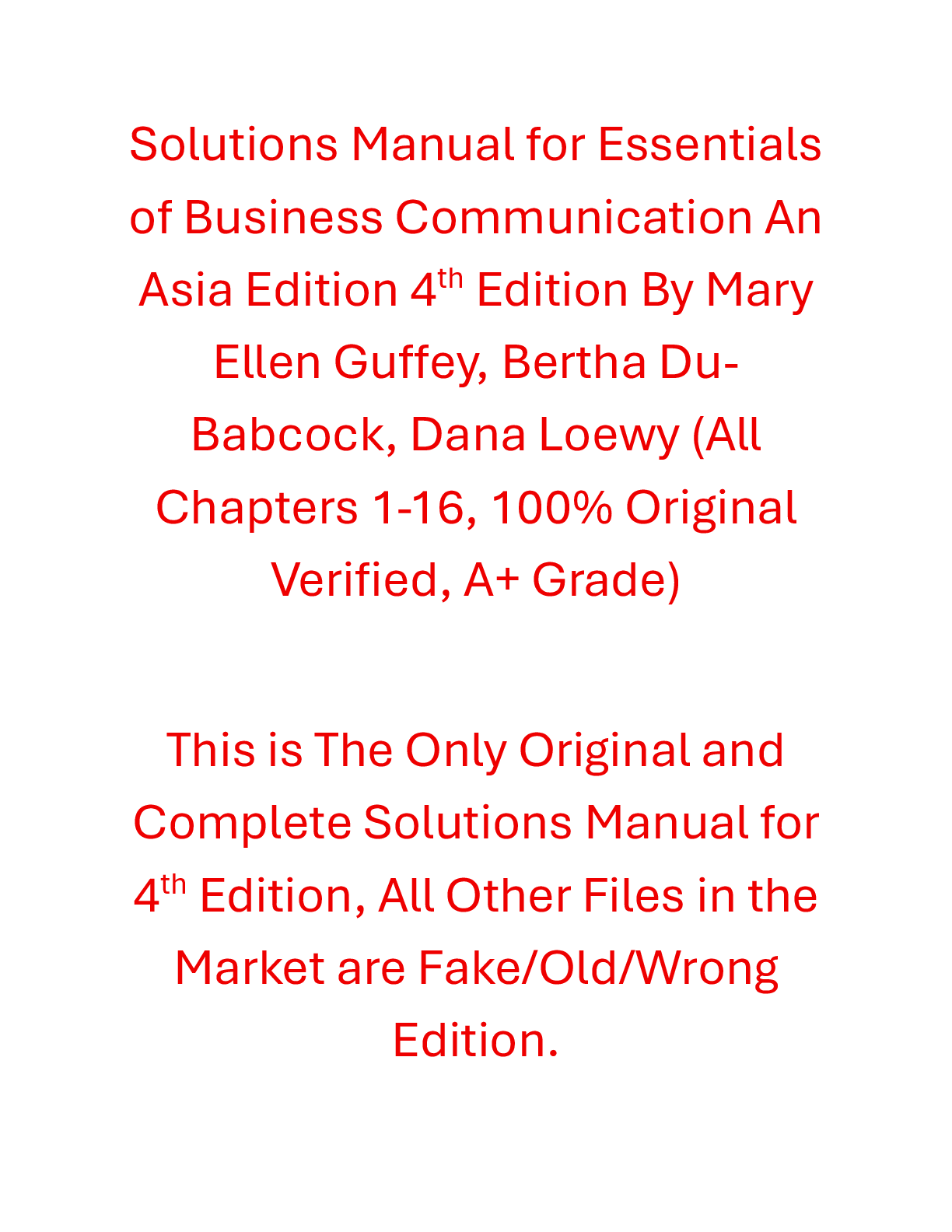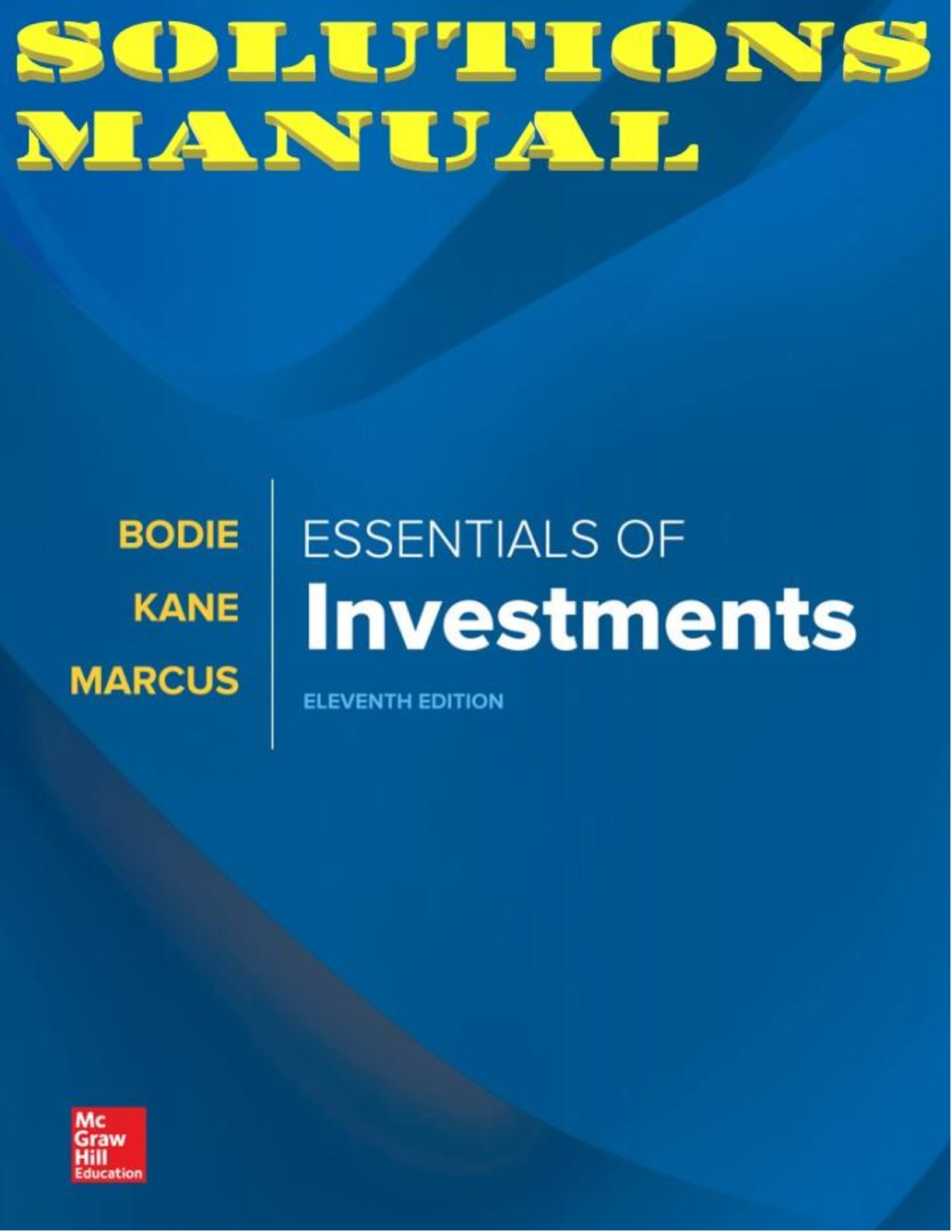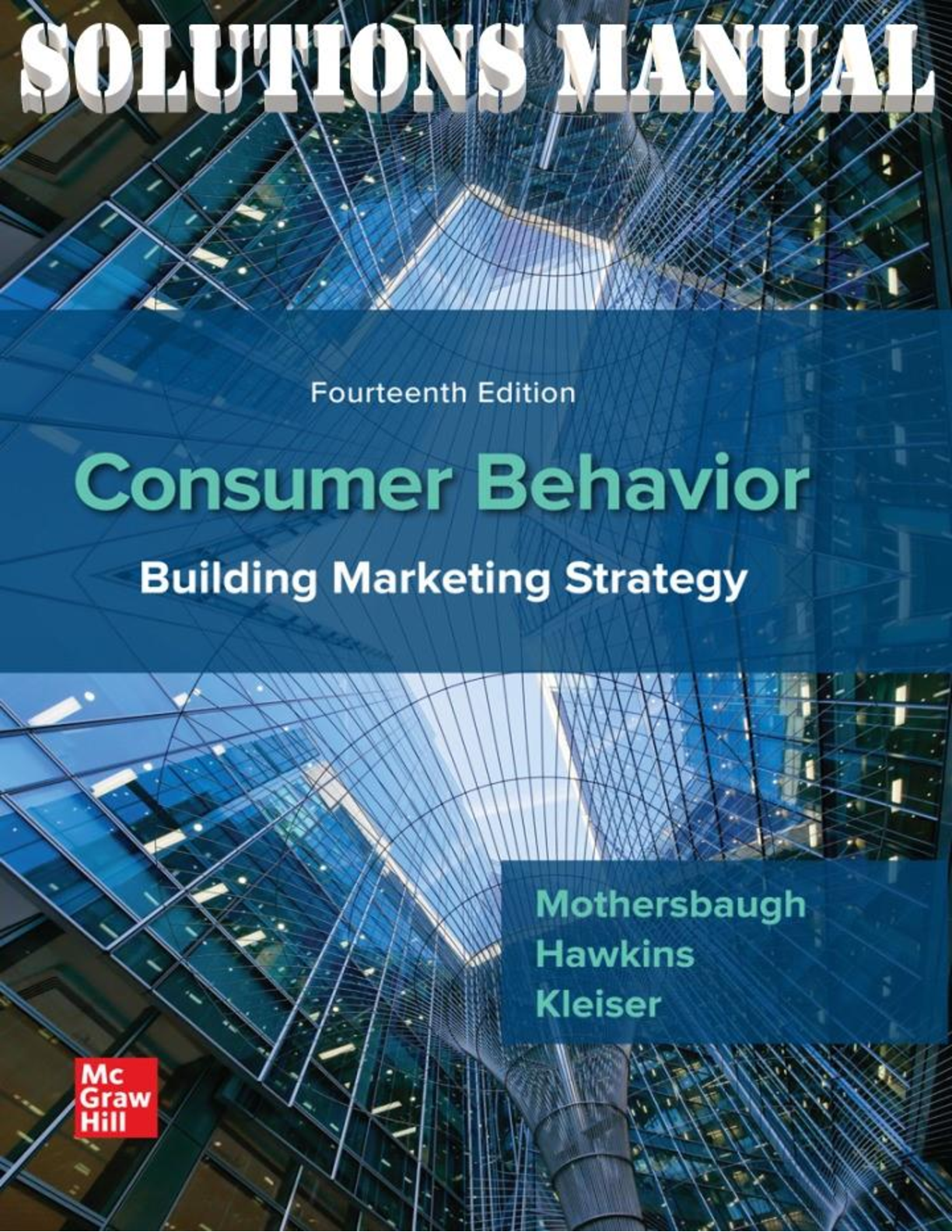Health Care > SOLUTIONS MANUAL > Solution Manual for Anatomy & Physiology 1st Edition by Elizabeth Co (All)
Solution Manual for Anatomy & Physiology 1st Edition by Elizabeth Co
Document Content and Description Below
Solution Manual for Anatomy & Physiology 1st Edition by Elizabeth Co-The purpose of this chapter is to introduce the student to methods and techniques that will help them understand the concepts rela ... ted to anatomy and physiology. This chapter begins with a discussion centered around the science of learning and the stages of the learning process. Additionally, this chapter defines a learning objective and helps students to understand how learning objectives can help them to know what their instructor feels is important and wants them to know. This knowledge, along with the methods and techniques, will help students to devise a process to assist with honing their skills in preparing to give back information learned on differing types of assessments. Finally, this chapter teaches students how to read and transfer anatomical knowledge learned from viewing one image to various other images, as opposed to trying to memorize the original image. Similarly students are taught how to understand the images of physiological processes by first understanding the symbols used in the image and then incorporating that understanding into what they know about physiological processes. Each section of this chapter focuses on metacognitive approaches that students can use to be successful in this course. Key Terms Log in to cengage.com as an instructor to download a list of key terms separated by chapter. The textbook and eBook include a detailed glossary, and the MindTap course has a glossary app. [return to top] Chapter Outline I. The Science of Learning a. There is a science to learning and mastering content. Thinking critically and applying the information you learn is the aim of this process. b. There are three stages of learning: 1. Foreign 2. Familiar 3. Mastery c. During the foreign stage, a beginning learner is exposed to the information for the first time. In many cases, this occurs in a classroom setting. Through a variety of learning strategies, knowledge of the information or subject can be achieved. These strategies include story-telling, mnemonic devices, chunking, and retrieval practice. 1. Story-telling—creating stories to help remember information 2. Mnemonic devices —using a rhyme or song to remember information 3. Chunking—grouping items together 4. Retrieval practice—memory strengthening d. A learner can transition from the foreign stage to the familiar stage through repetitive exposure to the material. This can occur by: 1. Reading/rereading the notes 2. Copying the notes a second time 3. Watching and rewatching lectures 4. Reading and rereading the textbook 5. Using flashcards to memorize terminology e. The transition from familiarity to the mastery stage occurs through practice. This happens through teaching or explaining the material to someone else, drawing a structure or structures, writing an explanation of a concept, recreating a graph with 3 explanations, completing practice problems, or answering the question ―what happens if these components don’t work?”. II. Bloom’s Taxonomy of Cognitive Learning a. Bloom’s Taxonomy is an educational framework for evaluating the skills used in a question or task. It is based on the concept that different question types require different skills. Additionally, the skills build on one another. For example, you cannot apply information if you cannot remember it first. b. Bloom’s taxonomy levels begin with remembering information. Remembering can lead to higher levels, such as understanding and applying (see figure 1.03). III. Learning objectives a. Learning objectives (LOs) are goals assigned by an instructor that help students to understand what they are expected to know. They can also improve transparency between student and instructor. In this text, they are located at the beginning of each section and the end of each chapter. Students should be aware that an instructor may provide additional learning objectives. b. For details regarding the anatomy of a learning objective please see figure 1.04. IV. The Anatomy of Art a. Image transference in an anatomy and physiology course is valuable. Understanding anatomy and physiology requires visual learning. One example is recognizing threedimensional gross anatomy through diagrams, then applying this information to other visuals (x-rays and other medical imaging). b. To understand the gross anatomy diagrams, start with a point of reference and build from there. c. Histological images are used to understand microscopic anatomy. d. Diagrams are also helpful to understand physiological processes. The best approach is to start with understanding what the diagram is showing overall. From there, students should follow arrows or other symbols as they show progression through the process. [return to top] Discussion Questions You can assign these questions in several ways: as a discussion forum in your LMS; as a whole-class discussion in person; or as a partner or group activity in class. 1. Discussion: How to learn. Duration 5–10 minutes. a. Question: What techniques or practices have helped you learn in the past? i. There’s no right or wrong answer to this question. The students should spend some time thinking and reflecting on techniques that have helped them learn in the past. Emphasize that if it has worked for them in the past, then they should try to continue those techniques in their anatomy and physiology course. 2. Discussion: Learning in anatomy and physiology. Duration 5–10 minutes. a. Question: What practices and techniques do you think work best for learning concepts in anatomy and physiology? i. Answer: There is no right or wrong answer. The goal is to get students to brainstorm different learning techniques that may benefit them during their anatomy and physiology course. If there is a technique or approach that they have not tried before, encourage them to attempt to use it if they think it sounds like it could be beneficial. You could also suggest techniques that have worked for you in your own academic pursuits [Show More]
Last updated: 1 year ago
Preview 5 out of 600 pages

Loading document previews ...
Buy this document to get the full access instantly
Instant Download Access after purchase
Buy NowInstant download
We Accept:

Reviews( 0 )
$19.50
Can't find what you want? Try our AI powered Search
Document information
Connected school, study & course
About the document
Uploaded On
Oct 25, 2024
Number of pages
600
Written in
All
Additional information
This document has been written for:
Uploaded
Oct 25, 2024
Downloads
0
Views
51

